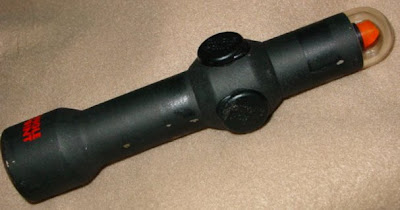The saber: Corbesier's manual
Thanks to the Internet Archive, this excellent little book is available for free in many digital formats at this link. It will prove of interest to hobbyist fencers and those interested in historical weapons. If you prefer a real book you can get one from Amazon.
The saber became the most common type of sword in Western military use and retained that position up until the time when swords were no longer useful in war. Its universal popularity owed to the manner of its use. A straightforward and highly logical method for saber fencing arose; no one is sure exactly where it originated. Somewhere in Eastern Europe is a good bet. With only minor regional differences, the saber fencing method became established everywhere in the Western world as the right way to do it. Military manuals show this when looked at side by side; the methods are substantially similar from one country to another, the convergence increasing over time.
 |
| A plate from Corbesier's manual |
By the nineteenth century there is a thoroughly homogenized, pan-European and American understanding of how the weapon works. The saber is used in dual tempo, parry followed by riposte. Parries are made with your blade in steep inclination with respect to the opposing blade, at or near right angles, reducing the chance of malparrying. Five characteristic parries emerge; some systems add a couple extras. The five are hanging guards (point down) to the left and right, upright guards (point up) to the right and left, and an overhead guard, the good old St. George. These are the same parries taught for sport fencing in our times.
There are many training manuals surviving from the long era in which the saber was the preferred sidearm. My favorite came along rather late, in 1872, but in its clarity and its elimination of extraneous material it is to my eye the best of the bunch. I refer to the manual prepared by Antoine Corbesier for the U.S. Navy. Corbesier was the Naval Academy's fencing master. His manual embodies excellent insights about the weapon and a clear idea of the best methods to use for teaching people what to do with it. The manual is set up around the idea of squad instruction via drills done on called out commands. Thanks to the Internet Archive, this excellent little book is available for free in many digital formats at this link. It will prove of interest to hobbyist fencers and those interested in historical weapons. If you prefer a real book you can get one from Amazon.
In theory, a straight thrusting sword is a deadlier and more efficient weapon than a saber. In practice, there is a problem with that. It is rather difficult to learn to use a thrusting sword well and it ordinarily requires long practice aided by a fencing master. Saber fencing, though, is simple enough that good results were obtained by recruits instructed out of a book, in group exercises led by sergeants. Sergeants are always plentiful, while bona fide fencing masters are few in any era and military forces do not have unlimited time to train the troops. Hence the saber's ascendency as the military weapon of choice.
There is an interesting principle here. The military is not always interested in the best weapon, but in the best attainable combination of weapon and trooper skill with his weapon. With the time and training resources that were available, soldiers could be made dangerous with the saber; the thrusting sword, though, would have taken vastly more time and higher quality instruction. A modern example that is somewhat similar: The US Army has stayed with the M16 for so long because it is matchlessly easy to shoot. Its excellent control ergonomics, straight line buttstock and trifling recoil, together with very good inherent accuracy for a military rifle, make a semi-skilled rifleman a dangerous customer. No one says it is the best fighting rifle ever, but it is something really outstanding in being easy to learn, easy to teach and easy to use.
Corbesier's little book sums up everything that is most useful to know about using a saber, cutlass or hanger. While there are many other historical manuals on the same subject, American and foreign, I can't think of any that are actually better suited to the task of taking a squad of recruits and making them passable swordsmen.


Comments
Post a Comment